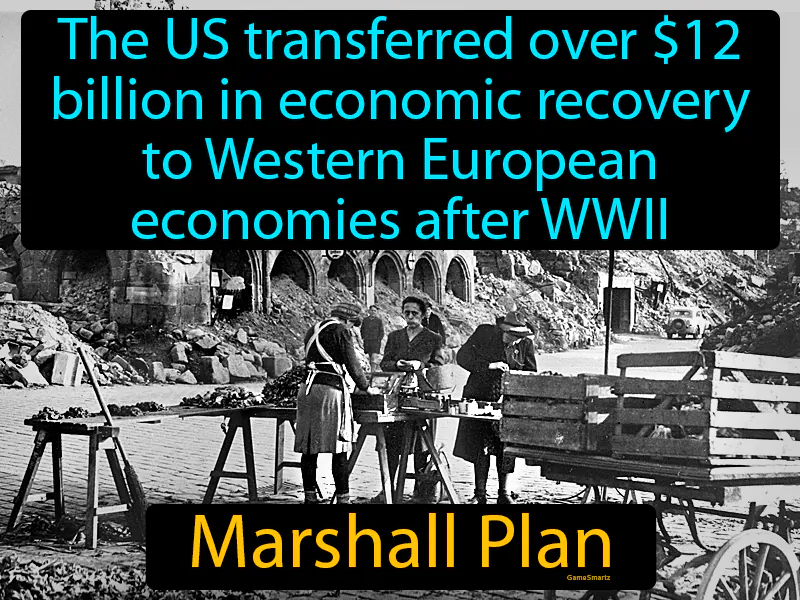Marshall Plan
Marshall Plan: Easy to understand
The Marshall Plan was crucial during the early Cold War as it helped rebuild Western European economies, preventing them from falling under Soviet influence. By promoting economic stability and growth, it aimed to strengthen alliances against the spread of communism, highlighting the ideological battle between democracy and communism. This event underscores today's ongoing discussions about international aid and cooperation, emphasizing the importance of supporting struggling nations to maintain global stability. For individuals today, these ideas influence how countries collaborate to solve global issues like poverty, health crises, and climate change. Understanding this history helps people see the value of international partnerships and how they can improve daily life through enhanced security, economic growth, and cultural exchange.

Practice Version

Marshall Plan: The US transferred over 12 billion in economic recovery to Western European economies after WWII. Marshall Plan. The Marshall Plan was a US initiative to aid Western Europe by providing economic support to help rebuild after the devastation of World War II.